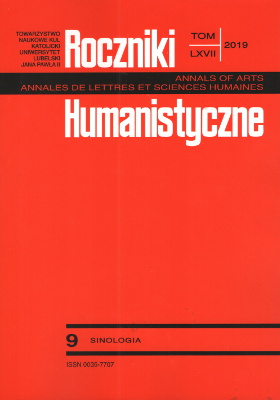How to Create a Language for the Whole People? On the Codification of Putonghua Pronunciation
How to Create a Language for the Whole People? On the Codification of Putonghua Pronunciation
Author(s): Maria KurpaskaSubject(s): Language and Literature Studies, Theoretical Linguistics, Phonetics / Phonology
Published by: Towarzystwo Naukowe KUL & Katolicki Uniwersytet Lubelski Jana Pawła II
Keywords: Putonghua; Mandarin; codification; language reform; phonetics; phonology
Summary/Abstract: The process of creating a modern national standard language for the whole of China has been long. It started in the beginning of the 20th century, when it became clear that a common spoken tongue was needed to unite the Chinese people. Thus the concept of Guóyǔ — ‘national language’ — was created.After the founding of People’s Republic of China, the work was taken up anew, the standard was renamed Pŭtōnghuà — ‘common speech.’ Its pronunciation is based on the dialect of Beijing, the Mandarin dialects have been the source of lexicon, and grammar has been founded on “model works in báihuà.”But how exactly did the work on creating the new standard look like? This paper intends to show the process of codification of the pronunciation of what we now know as Pŭtōnghuà. How it was decided to choose the speech of Beijing as the starting point, how the work was carried out, and also how the standard is changing.
Journal: Roczniki Humanistyczne
- Issue Year: 67/2019
- Issue No: 9
- Page Range: 89-100
- Page Count: 12
- Language: English

